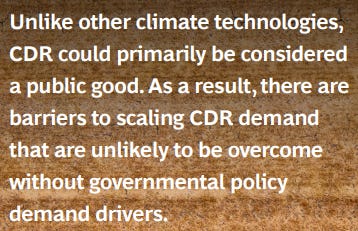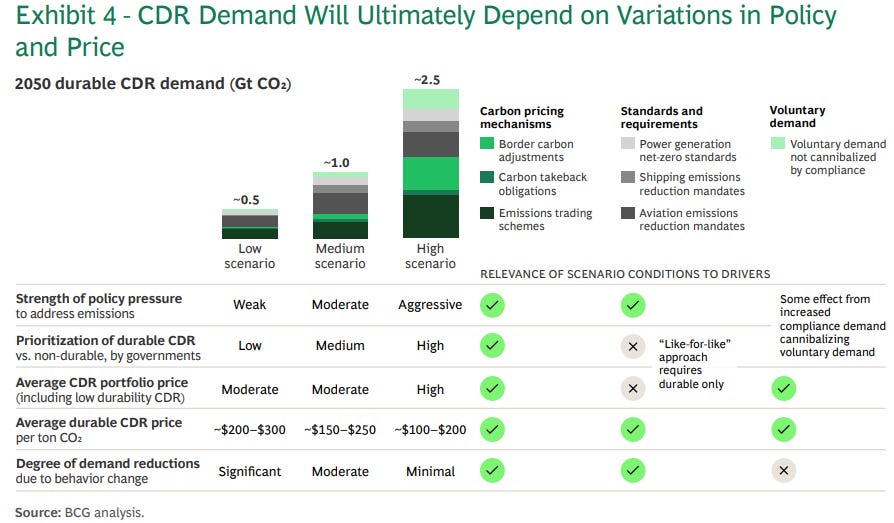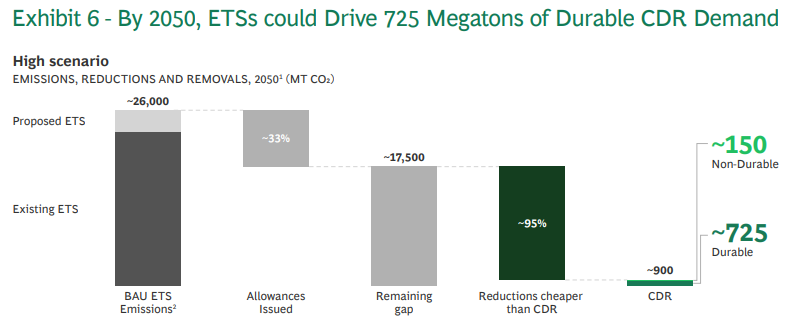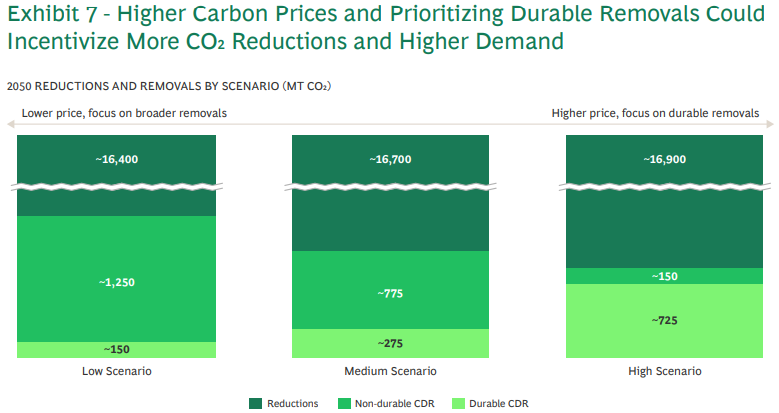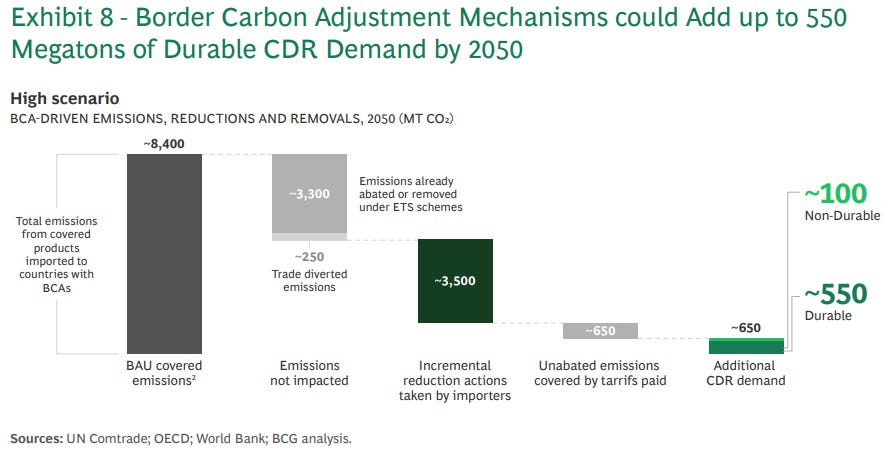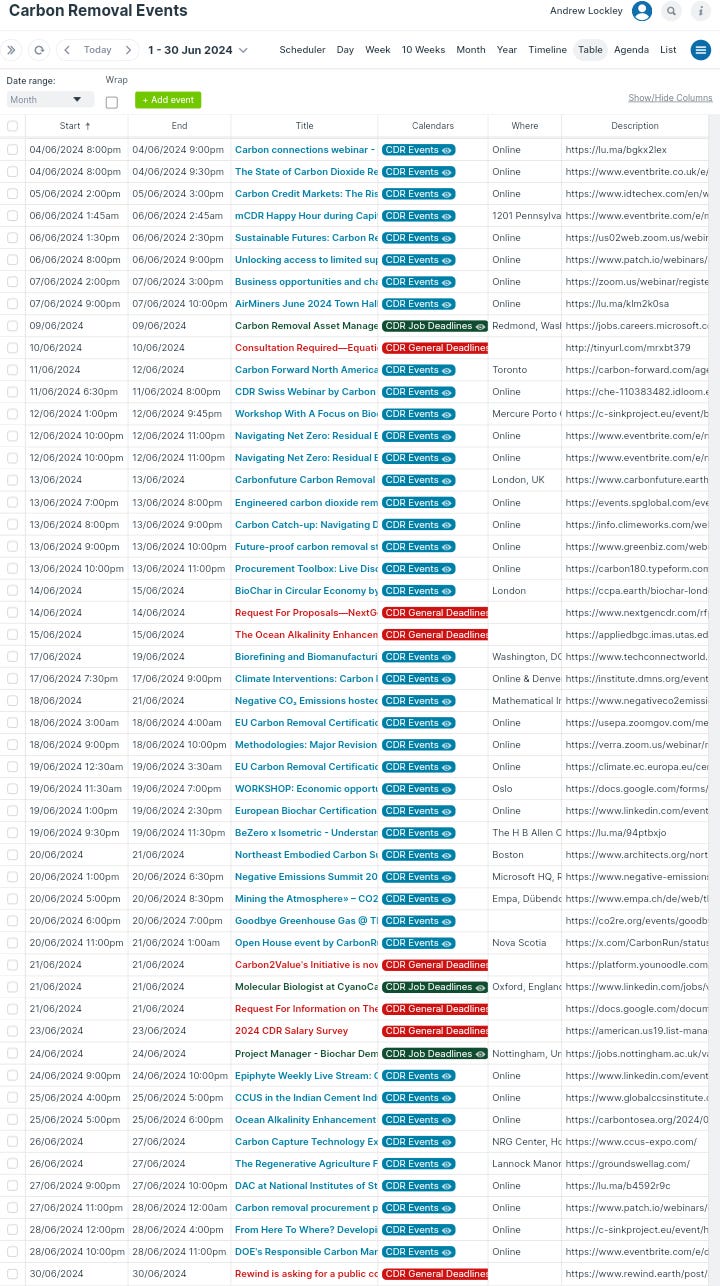CARBON REMOVAL WEEKLY SUMMARY (17 JUNE - 23 JUNE 2024)-WEEK#25
Links to recent scientific papers, web posts, upcoming events, job opportunities, podcasts, and event recordings, etc. on Carbon Dioxide Removal Technology.
💸COMMERCIAL NEWS
Microsoft Signs Largest-Ever Nature-Based Carbon Removal Deal with BTG Pactual (ESG Today)
Frontier buyers sign $48.6M in offtake agreements with Stockholm Exergi, in first large European deal (Frontiers)
Downforce Technologies secured $4.2 million in funding to measure carbon stored in soil (Impact Alpha)
Salesforce commits $25 million to ‘steep learning curve’ of carbon removal (GreenBiz)
Restord announces first carbon removal pre-purchase agreement with Bennetts Associates (Restord)
CarbonCapture Inc. unveils first U.S. direct air capture system designed for mass production; modular units to be manufactured at new high-volume facility in Mesa, Arizona (PR Newswire)
Carbon Removal Startup Equatic To Build A $100 Million Plant To Cut 100,000 Tons Of CO2 in Partnership with Deep Sky (Forbes)
Capture6 and Veolia Water Technologies & Solutions Announce a Global Collaboration to Help Reach Industrial Scale Carbon Removal (Capture6)
Isometric announces partnerships with 12 leading climate companies to enhance carbon dioxide removal (Isometric)
Skytree Signs Development and Supply Agreements with Purolite, an Ecolab company, to Reduce Costs and Improve Efficiency for Carbon Capture (Businesses wire)
Soletair Power signed an agreement with Danica Pension in Denmark to deliver an HVAC integrated direct air capture unit (LinkedIn)
Carbonethic and Dease River First Nation Sign Landmark Agreement for Carbon Sequestration Projects (AP News)
Indigo Ag's Carbon Program to deliver record carbon credits to Microsoft (PR Newswire)
XPRIZE and Creative Destruction Lab Join Forces to Accelerate Carbon Removal Solutions (Creative Destruction Lab)
Hemp Carbon Standard, a subsidiary of Hempalta Corp, has sold 514 Carbon Removal Units to Concordium (LinkedIn)
Carbominer To Receive Award From Google Startups Fund In Ukraine (Carbon Herald)
DNV gives greenlight to new methodology for carbon removals delivered by BECCS (Drax)
Swiss WorldCargo offers customers carbon removal with Climeworks (Stat Times)
Capture6 assists Palmdale Water District in construction of a project that will capture carbon and provide freshwater via the Pure Water AV Demonstration Facility (Capture6)
Octavia Carbon partnered with CEEZER to increase the global visibility of carbon credits from Project Hummingbird (LinkedIn)
First licenses in Danish history to explore onshore CO2 storage potentials awarded (Danish Energy Agency)
📝RESEARCH PAPERS
Biochar as a carbon dioxide removal strategy in integrated long-run climate scenarios
Bergero, C., Wise, M., Lamers, P., Wang, Y., & Weber, M. (2022). Biochar as a carbon dioxide removal strategy in integrated long-run climate scenarios.
Synopsis: Limiting global warming to under 2°C requires stringent mitigation and carbon dioxide removals (CDR). Biochar, a low-cost soil amendment, shows promise. Using a global model, biochar could sequester up to 2.8 GtCO2 annually, reducing temperature rises by 0.5-1.8% by 2100. Its effectiveness depends on crop yield gains, application rates, and competition with other CDR measures, proving competitive, especially at lower carbon prices.
Enhanced weathering for CO2 removal using carbonate-rich crushed returned concrete; a pilot study from SE Ireland
McDermott, F., Bryson, M., Magee, R., & van Acken, D. (2024). Enhanced weathering for CO2 removal using carbonate-rich crushed returned concrete; a pilot study from SE Ireland. Applied Geochemistry, 106056.
Synopsis: A 1.21-ha study in SE Ireland explored using 7.5 tonnes/ha of crushed returned concrete (CRC) as a soil amendment for carbon dioxide removal (CDR) through enhanced weathering over 10 months. CRC increased soil pH and calcium and bicarbonate concentrations, especially in soils with lower initial pH. Most sites showed bicarbonate to cation ratios indicative of CRC dissolution by soil carbonic acid. Bicarbonate export limited CDR rates to 0-0.52 tonnes CO2/ha. Life-cycle analysis suggests a 11% discount for CO2 emissions from CRC processing.
A review of measurement for quantification of carbon dioxide removal by enhanced weathering in soil
Clarkson, M. O., Larkin, C., Swoboda, P., Reershemius, T., Suhrhoff, J. T., Maesano, C. N., & Campbell, J. (2023). A Review of Measurement for Quantification of Carbon Dioxide Removal by Enhanced Weathering in Soil.
Synopsis: Limiting global warming to <2°C requires CDR alongside rapid emissions reductions. Terrestrial enhanced weathering using Ca- and Mg-rich silicates in soils could remove gigatonnes of CO2 annually. However, measuring, reporting, and verifying (MRV) this is challenging. This review covers methods for monitoring EW, focusing on geochemical characterization and final carbon storage in oceans. Solid and aqueous phase measurements, alongside gas phase measurements, each have strengths and limitations. Effective MRV strategies and well-designed experiments are crucial for the early EW CDR industry.
Review and syntheses: Ocean alkalinity enhancement and carbon dioxide removal through coastal enhanced silicate weathering with olivine
Geerts, L. J., Hylén, A., & Meysman, F. J. (2024). Review and syntheses: Ocean alkalinity enhancement and carbon dioxide removal through coastal enhanced silicate weathering with olivine. EGUsphere, 2024, 1-46.
Synopsis: Coastal enhanced silicate weathering (CESW) using minerals like olivine aims to increase ocean alkalinity and CO2 sequestration. However, uncertainties about efficiency and impact remain due to a lack of large-scale field studies. This review highlights the need for pilot studies to address these gaps and examines how sediment type affects olivine dissolution and alkalinity generation.
Trends and drivers of terrestrial sources and sinks of carbon dioxide: an overview of the TRENDY Project
Sitch, S., O'Sullivan, M., Robertson, E., Friedlingstein, P., Albergel, C., Anthoni, P., ... & Zaehle, S. (2024). Trends and drivers of terrestrial sources and sinks of carbon dioxide: an overview of the TRENDY Project. Global Biogeochemical Cycles.
Synopsis: The TRENDY project, using Dynamic Global Vegetation Models, provides updated estimates of land-atmosphere carbon exchange. From 2012-2021, results show a large global carbon sink in natural vegetation, mainly due to CO2 fertilization and climate effects, offset by land use emissions. The net land sink is 1.7 PgC/yr, with the largest exchange in extratropical regions.
Tibetan Plateau grasslands might increase sequestration of microbial necromass carbon under future warming
Zhang, Q., Chen, X., Zhou, X., Nie, X., Liu, G., Zhuang, G., ... & Ma, A. (2024). Tibetan Plateau grasslands might increase sequestration of microbial necromass carbon under future warming. Communications Biology, 7(1), 686.
Synopsis: Microbial necromass carbon (MNC) indicates soil carbon sequestration capacity. In Tibetan Plateau alpine grasslands, warming increases MNC by 68.3% (7.49 mg/g). Using deep learning, eco-cluster abundance accurately predicted MNC distribution, suggesting enhanced soil carbon sequestration under warming.
Potential long-term, global effects of enhancing the domestic terrestrial carbon sink in the United States through no-till and cover cropping
Weber, M., Wise, M., Lamers, P., Wang, Y., Avery, G., Morris, K. A., & Edmonds, J. (2024). Potential long-term, global effects of enhancing the domestic terrestrial carbon sink in the United States through no-till and cover cropping. Carbon Balance and Management, 19(1), 18.
Synopsis: Achieving a net zero GHG economy in the US requires deep mitigation and CDRs. Enhancing the terrestrial carbon sink through no-till and cover cropping can help, but may affect US agricultural outputs and global markets. An integrated model in this study shows that valuing all terrestrial carbon promotes afforestation, while valuing soil carbon boosts no-till and cover cropping adoption. Targeted carbon incentives can increase the carbon sink with minimal impact on crop availability. Future studies should model non-CO2 GHGs, carbon storage, and cost considerations.
Negative emission potential from biomass/waste combined heat and power plants integrated with CO2 capture: An approach from the national perspective
Dong, B., Wang, S., Thorin, E., Sun, Q., & Li, H. (2024). Negative emission potential from biomass/waste combined heat and power plants integrated with CO2 capture: an approach from the national perspective. Journal of Cleaner Production, 142917.
Synopsis: Integrating CO2 capture in biomass or waste-fired CHP plants is crucial for achieving negative emissions. Using Sweden as a case study, a dynamic model shows that maximizing CO2 capture can achieve 8.7 million tons of negative emissions annually. Maintaining electricity generation reduces this to 4.3 million tons. Costs are $36.9/tonCO2 and $52.0/tonCO2, respectively. Biogenic fraction significantly impacts outcomes, requiring 32.8%-84.3% to meet Sweden's climate goals.
Responses of microbial metabolic rates to non-equilibrated silicate vs calcium-based ocean alkalinity enhancement
Marin-Samper, L., Arístegui, J., Hernández-Hernández, N., & Riebesell, U. (2024). Responses of microbial metabolic rates to non-equilibrated silicate vs calcium-based ocean alkalinity enhancement. EGUsphere, 1-25.
Synopsis: This study explores non-equilibrated Ocean Alkalinity Enhancement (OAE) using silicate and calcium-based gradients up to 600 µmol/L, affecting pH and pCO2 in a mesocosm. It shows delayed phytoplankton bloom formation, especially with calcium treatments, due to high pH/low CO2 effects on growth. Further research is needed on trophic impacts and seasonal suitability of OAE.
How much methane removal is required to avoid overshooting 1.5°C?
Smith, C. J., & Mathison, C. (2024). How much methane removal is required to avoid overshooting 1.5° C?. Environmental Research Letters.
Synopsis: Immediate methane mitigation can curb significant future warming. Technological methane removal, while effective in limiting peak temperatures to 1.5°C for small overshoots, faces challenges with higher overshoots. Its success hinges on climate sensitivity and aerosol forcing, requiring ongoing removal efforts post-peak warming to stabilize below 1.5°C.
Bomb radiocarbon evidence for strong global carbon uptake and turnover in terrestrial vegetation
Graven, H. D., Warren, H., Gibbs, H. K., Khatiwala, S., Koven, C., Lester, J., ... & Wieder, W. (2024). Bomb radiocarbon evidence for strong global carbon uptake and turnover in terrestrial vegetation. Science.
Synopsis: Current vegetation models underestimate carbon uptake by plants. By analyzing bomb-test radiocarbon, this study found terrestrial carbon storage and productivity are higher than models suggest, implying vegetation's role in carbon sequestration is more significant but potentially more vulnerable than assumed.
Recent advances in engineering fast-growing cyanobacterial species for enhanced CO2 fixation
Kim, D. S., Moreno-Cabezuelo, J. Á., Schulz, E. N., Lea-Smith, D. J., & Sagaram, U. S. Recent advances in engineering fast-growing cyanobacterial species for enhanced CO2 fixation. Frontiers in Climate, 6, 1412232.
Synopsis: This review examines the thermodynamics of CO2 removal via photosynthetic microorganisms versus physicochemical methods. It explores energy efficiency and scalability, highlighting advances in cyanobacteria for enhanced carbon capture and synthetic biology applications in biotechnology for more economical and efficient carbon dioxide removal solutions.
Conceptualizing soil fauna effects on labile and stabilized soil organic matter
Angst, G., Potapov, A., Joly, F. X., Angst, Š., Frouz, J., Ganault, P., & Eisenhauer, N. (2024). Conceptualizing soil fauna effects on labile and stabilized soil organic matter. Nature Communications, 15(1), 5005.
Synopsis: Soil fauna significantly influences soil organic matter (SOM) stabilization through ecological strategies affecting particulate (POM) and mineral-associated organic matter (MAOM). Mechanisms include transformation, translocation, and grazing on microorganisms, impacting organic matter quantity, decomposability, soil mineralogy, and microbial communities. Integrative studies are crucial for advancing SOM concepts and policies for carbon sequestration, nutrient cycling, and sustainable soil management.
Soil carbon sequestration increment and carbon-negative emissions in alternate wetting and drying paddy ecosystems through biochar incorporation
Liu, C., Chen, T., Zhang, F., Han, H., Yi, B., & Chi, D. (2024). Soil carbon sequestration increment and carbon-negative emissions in alternate wetting and drying paddy ecosystems through biochar incorporation. Agricultural Water Management, 300, 108908.
Synopsis: Biochar incorporation in rice paddies, especially under alternate wetting and drying (IAWD), enhances soil carbon sequestration (SOCS), according to this study. It reduces methane emissions by up to 38% and greenhouse gas intensity by 69%. Biochar combined with IAWD achieves the highest SOCS (56.9 t C/ha) and lowers net global warming potential (-23.0 t CO2-eq/ha). This approach mitigates methane emissions and increases grain yield, demonstrating its potential as a robust strategy for carbon-negative agriculture.
Solar-Powered Direct Air Capture: Techno-Economic and Environmental Assessment
Prats-Salvado, E., Jagtap, N., Monnerie, N., & Sattler, C. (2024). Solar-Powered Direct Air Capture: Techno-Economic and Environmental Assessment. Environmental Science & Technology.
Synopsis: This study investigates solar-powered liquid solvent direct air capture (L-DAC) of CO2, addressing challenges like fossil CO2 fraction and high-temperature requirements in traditional methods. It shows solar thermal energy's viability in arid regions enhances L-DAC efficiency and cost-effectiveness, promoting sustainable carbon-neutral technologies for fuels and chemicals.
Frugivores enhance potential carbon recovery in fragmented landscapes
Bello, C., Crowther, T. W., Ramos, D. L., Morán-López, T., Pizo, M. A., & Dent, D. H. (2024). Frugivores enhance potential carbon recovery in fragmented landscapes. Nature Climate Change, 1-8.
Synopsis: This study evaluates the impact of frugivorous animals on forest recovery and carbon sequestration in tropical landscapes. Large birds, critical for dispersing late-successional species, were limited in fragmented areas with <40% forest cover, reducing future biomass potential by 38%. Maintaining forest cover >40% is crucial for optimizing animal contributions to biodiversity and carbon storage, emphasizing the need for active restoration efforts in fragmented landscapes.
Increasing numbers of global change stressors reduce soil carbon worldwide
Sáez-Sandino, T., Maestre, F. T., Berdugo, M., Gallardo, A., Plaza, C., García-Palacios, P., ... & Delgado-Baquerizo, M. (2024). Increasing numbers of global change stressors reduce soil carbon worldwide. Nature Climate Change, 1-6.
Synopsis: This study examines soil carbon responses to multiple global change stressors across diverse ecosystems using data from 1,880 soil samples worldwide. It reveals that increasing numbers of stressors exceeding medium-high levels are linked to significant declines in soil carbon stocks and mineral association across biomes. Low-productivity ecosystems, such as deserts, are particularly susceptible. Understanding these interactions is essential for managing and preserving soil carbon in the face of global environmental changes.
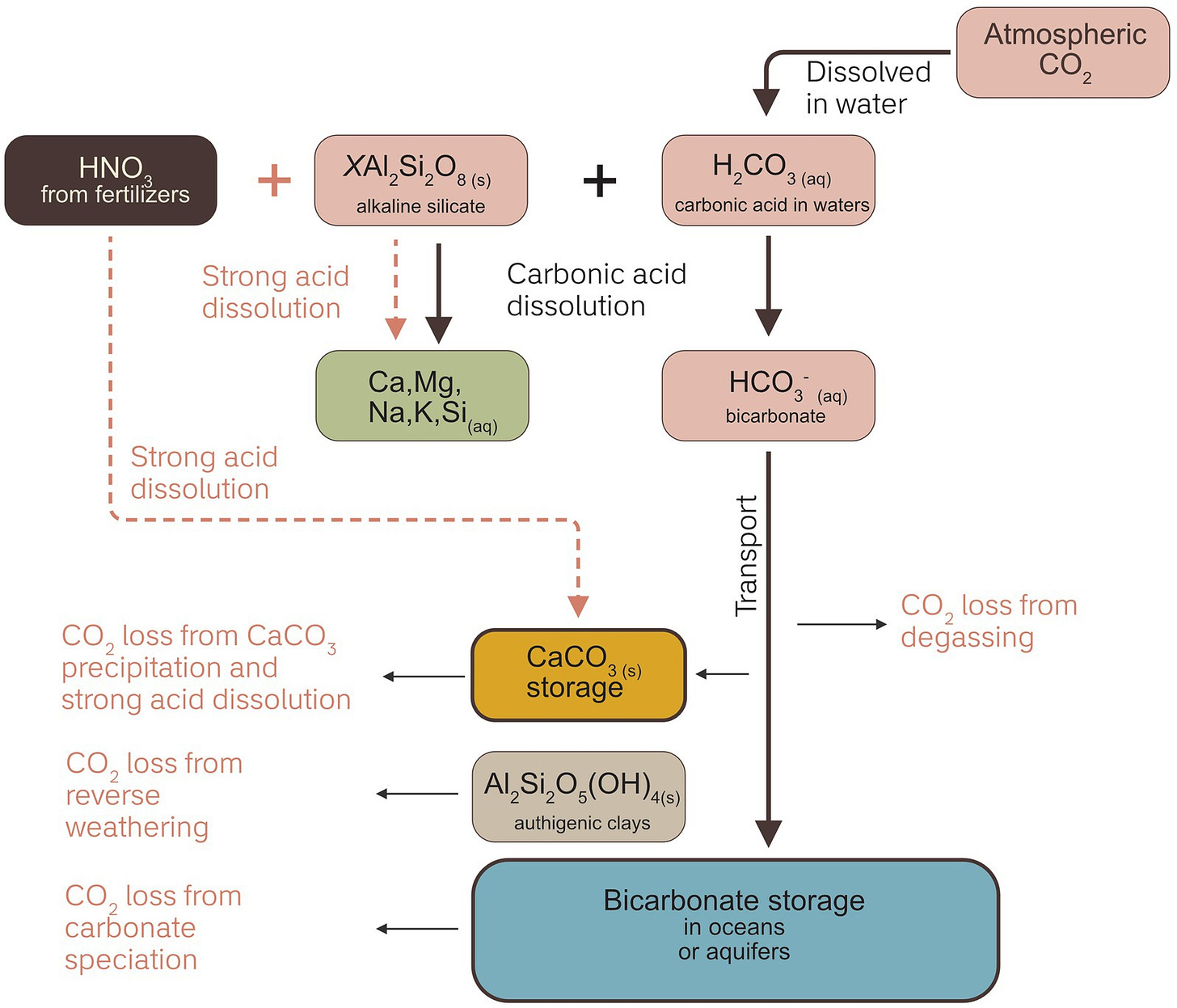
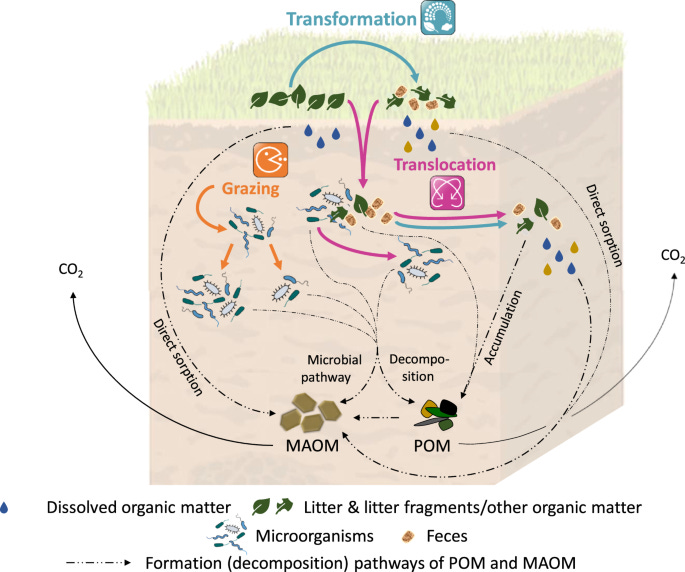
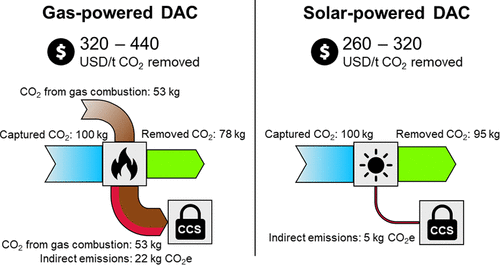
📰WEB POSTS
Fake Net Zero (LinkedIn - Robert Hoglund)
Bogus Carbon Credits are a ‘Pervasive’ Problem, Scientists Warn (Time)
New CDR.fyi Portal and Map Features: CDR Supplier Projects and Facilities (CDR.fyi)
Google and Microsoft Form an Alliance — Just to Plant Trees? (Medium)
2040 Targets and Green Claims: Council highlights carbon removal in discussions on key policies for the next decade of EU climate action (Carbon Gap)
Sustainability at Climeworks (Climeworks)
Running Tide first takes (Climagination)
EU biochar carbon removal methodology to generate first units in 2026 -official (Carbon Pulse)
Why Big Tech Is Pumping Big Money Into Companies Pulling CO2 From the Air (Newsweek)
Global Biochar C-Sink (Carbon Standards International)
Carbon Capture, Inc. should pivot (Terraform Now)
The Danish CDR Deal: Clarified and Reclassified (CDR.fyi)
Francis Pomerleau Joins CarbiCrete Board of Directors (Carbicrete)
Could the Global Boom in Greenhouses Help Cool the Planet? (Yale Environment 360)
Born to Die (Keep Cool)
Carbon Removal Startup BluSky Becomes Public, Aims To Scale Innovative Pyrolysis + DAC System (Carbon Herald)
Lafarge Canada, Hyperion carbon recycling system sequesters emissions in building components (Recycling Product News)
NETL Expertise To Help Develop Standards for Direct Air Capture Industry (NETL)
Geologically Stored Carbon methodology Edition 2024 now available! (Puro.earth)
Scientists sound alarm over threat altering ocean's ability to absorb carbon: 'A threat to global scale processes' (TCD)
Potential of many marine CDR methods is overstated (Oceans and Kelp)
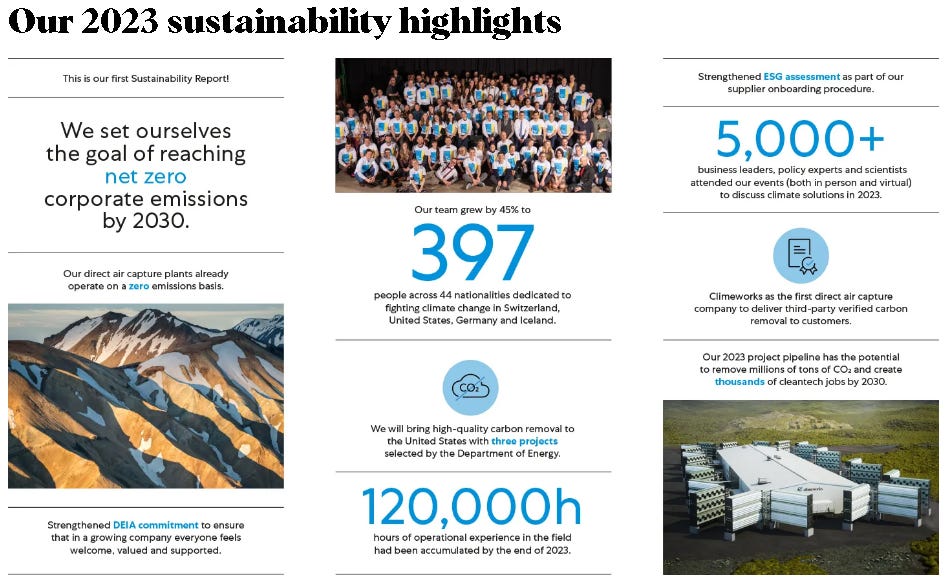
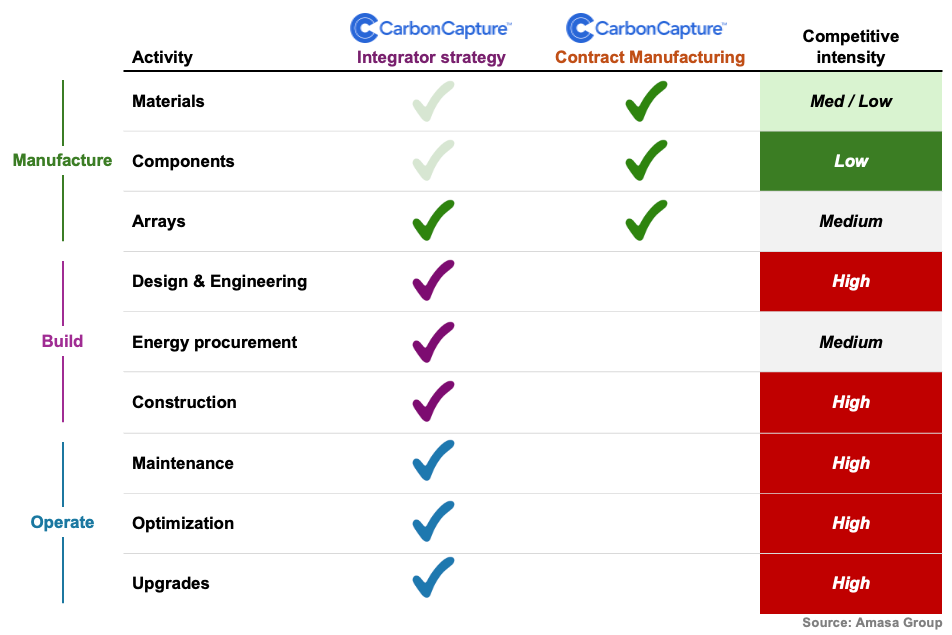
📒THESIS
Buried Hope: Assessing The Future Of Carbon Sequestration In the U.S. Under The Updated 45Q Tax Credit
📃REPORTS
MaRS Discovery District Carbon Dioxide Removal Pre-purchase
2023-Carbon loss and carbon sequestration due to global land cover change
Scaling CDR: Demand Drivers for Durable Carbon Removal
🎬UPCOMING FILM
The Legion 44 Film
🗓️UPCOMING EVENTS
(NEW) Ocean Alkalinity Enhancement Joint Learning Opportunity Q&A Session by Carbon to Sea Initiative and COVE | 25 June 2024 | Online
(NEW) CCUS in the Indian Cement Industry: A Review of CO2 Hubs and Storage Facilities by Global CCS Institute | 25 June 2024 | Online
Mining the Atmosphere» – CO 2 from the atmosphere as a raw material for new materials | 26 June 2024 | Empa, Dübendorf
Carbon Capture Technology Expo North America | 26-27 June 2024
The Regenerative Agriculture Festival by Groundswell | 26 &27 June 2024 | UK
Carbon removal procurement playbook with U.S. Department of Energy (DOE), Bain & Company, and Charm Industrial by Patch | 27 June 2024 | Online
(NEW) DAC at National Institutes of Standards and Tech by Airminers | 27 June 2024 | Online
From Here To Where? Developing The CDR Legal Landscape In The EU by CSink | 28 June 2024 | Online
DOE's Responsible Carbon Management Initiative and CDR Purchase Pilot Prize by Institute for Responsible Carbon Removal | 28 June 2024 | Online
Epiphyte Weekly Live Stream: Open Source Direct Air Capture by The OpenAir Collective | 01 July 2024 | Online
Epiphyte Weekly Live Stream: Open Source Direct Air Capture by The OpenAir Collective | 08 July 2024 | Online
(NEW) What Role Will Carbon Removal Play Under Article 6 of the Paris Agreement? by Institute for Responsible Carbon Removal | 08 July 2024 | Online
(NEW) EU Carbon Removal Carbon Farming Certification – Online Workshop on Peatland rewetting | 09 July 2024 | Online
Driving Development of Ocean-Based Carbon Removal Technologies with Innovations in MRV, Oceanographic Modelling & New Policy Frameworks to Reduce Global CO2 Emissions | 9-11 July 2024
(NEW) Biochar Project Finance: What's available today and where do we want to go? by IBI & Kita | 10 July 2024 | Online (9:30pm)
Advancing Carbon Management: Insights from Land to Sea Using ArcGIS Tools | 16 July 2024 | San Diego / Online
2nd Biochar Malaysia Association International Conference 2024 by International Biochar Initiative | August 13-14, 2024
Goldschmidt 2024 conference, Chicago | 18-23 August 2024
Carbon Unbound Europe | 11-12 September 2024
Carbfix Mineralization Summit 2024 | 12-13 September 2024
Grounding Carbon Farming at Wageningen University & Research by WIMEK in collaboration with SBL, ENP, NGO myclimate, and the farm "La ferme de Hyaumet" | 14-20 September 2024 | France
CO2NNECT 2024 by the Great Plains Institute's Carbon Action Alliance | 29 September - 01 October 2024 | Colorado
Bellona Climate Action Conference | 01 October 2024 | Brussels (Belgium)
Volcanoes and past climate: adventures with deep carbon | 12 October 2024 | Online & ExCeL London
IBI Biochar Study Tour: Italy by the Italian Biochar Association and the International Biochar Initiative | 16-18 October 2024 | Florence, Italy
How to apply biochar in sustainability management and accounting | German Biochar Forum | 18 November 2024
We have curated a “Carbon Removal Events Calendar.” Explore and stay informed about upcoming events, conferences, and webinars on Carbon Dioxide Removal technology. Sync specific events / all events to your default calendar to ensure you never miss out on important CDR updates.
GUIDELINES:
Sync selected events to your default calendar in these simple steps:
1) Click on the event you want to sync.
2) Tap the menu icon (three vertical lines) at the top left.
3) Choose 'Share.'
4) Pick your default calendar.
5) Save the event.
Sync the entire Teamup Calendar to your default calendar with these simple steps:
1) Tap the menu icon (three vertical lines) at the top right.
2) Choose 'Preferences.'
3) Click 'iCalendar Feeds.'
4) Copy the URL shown for 'CDR Events / CDR General Guidelines / CDR Job Deadlines.'’
5) Paste the URL into your default calendar settings.
6) Click 'Subscribe' or 'Add Calendar.'
For more detailed instructions, visit: https://calendar.teamup.com/kb/subscribe-to-teamup-icalendar-feeds/
You can directly sync all Carbon Removal events to your default calendars by pressing the link below:
💼JOB OPPORTUNITIES
Postdoc (2 years) Chemical or Biological Oceanography with an interest in Ocean Alkalinity Enhancement at SusTech
"The aim of the postdoc project is to understand the side-effects of unequilibrated ocean alkalinity enhancement in the marine environment. Our group presently conducts experiments at 50 L and 50,000 L scale to understand the effects of increasing alkalinity on marine biogeochemistry. Larger field trials at million litre scale are planned in 2026 and we also monitor several localities in China where high unequilibrated alkalinity concentrations from industrial sources outflow into natural waters. Key questions are whether or not ocean alkalinity enhancement is a cost-effective method of achieving negative emission technology, what side-effects (ecological and chemical) result from alkalinity additions to coastal seawater, and how reproducible the effects of alkalinity enhancement are contrasting different alkalinity sources and localities. More details on forthcoming field activities can be provided at interview."
Junior Chief of Staff at Vaulted Deep | San Francisco, CA
"Vaulted is an emerging leader in permanent carbon removal. As a Biomass Carbon Removal and Storage (BiCRS) solution, Vaulted delivers permanent, high quality carbon removal at scale through the geologic sequestration of carbon-filled organic waste.
Vaulted’s approach is designed to be the lowest cost, gigaton scale, permanent carbon removal. We sequester sludgy organic wastes (biosolids, manure, agricultural, food waste, paper sludge, etc.) that today are sent to a landfill, dumped into an ocean/river, land applied, or otherwise left to decompose, releasing Green House Gases (GHGs) into the atmosphere. Vaulted leverages a suite of patented, mature, geologic slurry sequestration technologies which allow us to sequester organic waste with minimal processing. We inject deep under the earth’s surface, where the carbon is permanently trapped under a layer of impermeable rock - the same formations that have kept hydrocarbons underground for millions of years."
PhD student in Geochemistry and Petrology focusing on novel Carbon Dioxide Removal technologies at Stockholm University | Stockholm
"According to the Intergovernmental Panel for Climate Change (IPCC, 2022), mitigation pathways that offer a 50% chance of limiting end-of-century global warming to 1.5°C rely partly on removal of as much as 1090 billion tons of carbon dioxide from the atmosphere by novel Carbon Dioxide Removal (CDR) technologies. Currently, 0.002 billion tons of carbon dioxide are removed annually from the atmosphere by such technologies. In other words, novel CDR technologies need to be upscaled by as much as a factor of 5000 from present-day levels. Novel CDR technologies involve storing carbon in rocks, of which mafic volcanic rocks (basalts) are of particular interest because carbon storage has been shown to occur by rapid mineralization (Matter et al., 2016). However, most basalts occur beneath the ocean floor, which is unsuitable for storing carbon for practical reasons. Occasionally, rocks of basaltic composition are found on continents. These were brought there (obducted) during mountain building. Typically, obduction is accompanied by metamorphism, a process which transforms basalt into a suite of rocks (metabasalts) that have the same composition as basalt but are made of different minerals. The global potential of metabasalts for CDR is not well established. This four-year project focuses on testing the hypothesis that metabasalts are suitable for CDR by mineralization. The hypothesis will be tested by performing flow through experiments on metabasalts that were formed at different pressures and temperatures. Training will be offered in fieldwork, petrology, experimental and analytical geochemistry and geochemical modelling. The successful applicant will join a team of petrologists and geochemists working on CDR at Stockholm University and Luleå Technical University."
Business and Strategy lead at Sirona Technologies
"Sirona Technologies is a start-up focused on direct air capture (DAC) to remove CO2 from the atmosphere and tackle climate change. Following two successful fundraising rounds, we’re expanding our team to accelerate business development."
Research Scientist at Silicate | Dublin, IE
“Silicate is a terrestrial enhanced weathering company accelerating a natural geological process – the weathering of minerals – to durably sequester atmospheric carbon dioxide and amend soil pH in farmland. The company mills basic materials, applies them to farmland, and measures the carbon removal it enables, facilitating companies to achieve their net zero ambitions, and agribusinesses to reduce and remove greenhouse gas emissions in their value chain, while also helping farmers to increase productivity by optimising soil pH for crop growth.”
Technical Sales Manager (Carbon Dioxide Removal) at Brightsmith | B Corp | United Kingdom
"As the Technical Sales Manager , you will own the development of strategic commercial partnerships with established buyers of carbon removal credits and carbon removal project developers seeking to deploy our Direct Air Capture products."
Postdoctoral Research Scholar – Carbon Sequestration Account at Arizona State University | Tempe, AZ
"The Center for Negative Carbon Emissions (CNCE) at Arizona State University is seeking a highly skilled and motivated postdoctoral research scholar to assist CNCE researchers in assessing the verifiability of carbon sequestration technologies across geologic and oceanic reservoirs.
This position will work with an interdisciplinary team of physicists, geologists, engineers, oceanographers, modelers, and climate scientists, with funding from the Department of Energy (DOE) and the Advanced Research Projects Agency–Energy (ARPA-E) and Office of Fossil Energy and Carbon Management (FECM).
Specifically, the postdoctoral researcher will be responsible for supporting the assessment of the verifiability of sequestration in two different types of reservoirs: (1) ocean iron fertilization in open waters of the United States maritime zone and (2) sequestration in a saline aquifer in the Southwest United States and. This effort will advance a novel carbon accounting framework designed to verify the sequestration of carbon. Most of the focus will be on marine sequestration in the early phases of the postdoc position."
Carbon Removal Program Manager at Microsoft | Redmond, Washington, United States
"As the environmental challenges facing the world grow, so too has Microsoft’s commitment to ensuring that the company’s activities are in-line with the best available science and the expectations of leading stakeholder communities. The Carbon Dioxide Removal(CDR) team coordinates overall science-based, measurable, and scalable sustainability investments and outcomes across the company – engaging with business groups on the environmental impacts of business operations and positive environmental outcomes resulting from technology and policy development.
The CDR team seeks an impact-driven, high-performing individual to join our team as a Carbon Removal Program Manager, focused on science & quality and due diligence workstreams. This position will contribute to two scopes of work (1) accelerating the MSCDR diligence process while maintaining or improving diligence rigor, and (2) developing new, high-quality CDR pathways and projects via procurement and partnerships."
Program Manager, Farm Deployments at Lithos Carbon | Bellevue, WA, USA
"Lithos Carbon accelerate mineral weathering by spreading basalt on croplands to increase dissolved inorganic carbon with eventual storage as ocean carbonates. Their technology uses novel soil models and machine learning to maximize CO₂ removal while boosting crop growth."
Program Manager, Midwest Farm Deployments & Head of Carbon Credits at SCW Systems | European Union
"At SCW Systems we believe in the power of innovation to combat climate change. Our Direct Air Capture technology, which is accompanied by groundbreaking energy efficiency, allows us to extract CO₂ directly from the air and store it permanently. This offers national and international companies a unique opportunity to offset their CO₂ emissions and achieve their sustainability goals."
Customer Success Manager | New York, USA & CDR Lead at BeZero Carbon | UK
"BeZero Carbon’s Mission is to scale investment in environmental markets that deliver a sustainable future. We are a carbon ratings agency. We equip world-leading organizations with the knowledge, tools and confidence to make better climate decisions."
Electrical Engineering Lead - Carbon Capture Project at Heidelberg Materials | Allentown, PA, USA
"Heidelberg Materials is North America’s leading supplier of cement, aggregates, ready-mix concrete, and asphalt. We have hundreds of plants and thousands of employees working across the United States and Canada. We are also one of the world’s largest building materials companies.
Heidelberg Materials is developing USA’s first full-scale carbon capture, utilization, and storage (CCUS) solution for the cement industry at its Mitchell plant, Indiana that has potential to capture up to 2 million metric tons per annum of carbon dioxide (CO2) and transported by pipeline, and permanently sequestered in deep saline storage formations by 2030. This project will be a critical to achieve the sustainability targets set forth in decarbonisation road map, that will allow Heidelberg Materials and our customers to reduce emissions in the built environment and support near carbon-neutral concrete offerings."
Carbon Tech & Models at Bayer | Vicente Lopez, Buenos Aires Province, Argentina
"Bayer is looking for a carbon technical reference in Argentina to lead projects and discussions with scientists, associations, and key partners focused on unlocking the carbon potential in agriculture: predictive soil carbon models, carbon footprint methodologies and Regenerative Agriculture practices development and implementation."
Carbon Sales Manager at BioLite | United Kingdom
"BioLite is a for-profit social enterprise that develops, manufactures and markets distributed energy solutions for off-grid communities around the world. Our business serves two distinct markets, developing-world families living in energy poverty, and outdoor enthusiasts seeking off-grid cooking, charging and lighting products. BioLite has now delivered clean energy access to over eight million people and has mitigated more than two million tons of carbon dioxide from the atmosphere."
Research Scientist at Carbon Engineering | Squamish, British Columbia, Canada
"Unlike capturing emissions from industrial flue stacks, our technology captures carbon dioxide (CO2) – the primary greenhouse gas responsible for climate change – directly out of the air around us. This can help counteract today’s unavoidable CO2 emissions, and address the large quantities of CO2 emitted in the past that remains trapped in our atmosphere.
At Carbon Engineering, we’re focused on the development of megatonne-scale Direct Air Capture technology so it can have the greatest impact on the huge climate challenge."
Hardware Engineer at Everest Carbon | Linz, Upper Austria, Austria
"Everest Carbon is commercializing breakthrough proprietary measurement technology to validate carbon dioxide removal (CDR) through enhanced weathering (EW)."
Senior Carbon Manager at Reforest'Action | Rueil-Malmaison, Hauts-de-Seine, France
"Reforest’Action is linking its activities to the Voluntary Carbon Market (VCM). It intends to use carbon finance as a tool to leverage development of forest-related projects with outstanding value for communities, soil, biodiversity, and climate.
The VCM is a market-based tool designed to channel financial flows towards mitigation solutions including enhancement of natural carbon pools. It allows individuals and organizations to finance Nature Based Solution projects with demonstrated carbon removals. The VCM is expected to grow 15-fold by 2030 and demand for forest-based projects is already driving the development of our reforestation and afforestation activities."
🎙️PODCASTS
Running Tide Collapse & London Climate Week | Wicked Problems
"Maeve Allsup from Latitude Media and Duncan Reid, the organizer of Reset Connect, share their expert insights and experiences. Maeve discusses the recent developments in carbon removal, including the challenges faced by ocean-based CDR startups like Running Tide and the role of government procurement in the sector. Duncan takes us through the evolution of Reset Connect and its pivotal role in London Climate Action Week."
Marta Krupinska on carbon removal markets; B2B AI translation is hot | TNW Podcast
"The guest of the show is Marta Krupinska, CEO and co-founder of CUR8, a market-maker platform for carbon removals."
Sucking CO2 from the air — a "Mammoth task" | Future Tense
“They've just unveiled the world's largest air purifier in Iceland. Christened "Mammoth" the machine can filter up to 36,000 tons of CO2 from the atmosphere every year. It's the biggest carbon capture device ever built – but is it mammoth enough? And do the economics stack up?
Other scientists are using microbes to speed the process of mineralisation, the turning of CO2 into rock.
And all the while the search for alternative energy sources continues with an Icelandic company even getting ready to drill down into an underground magma chamber to try and tap its thermal potential.”
Here's a podcast to listen to unlimited episodes on Carbon Dioxide Removal Technology:
🎥YOUTUBE VIDEOS
Unlocking the future of sustainable mining through carbon sequestration | Canadian Light Source
"Is it possible to grow the mining industry while holding the line on carbon emissions? A new study involving scientists from the University of Alberta and the University of Bern could hold the answer. Using the CLS, the researchers determined how best to trap and store CO2 using brucite, a mineral found in certain mining wastes and geologic environments. They looked at how the proportion of iron content in brucite affects its efficiency in carbon capture, and whether the surrounding environment also changes its ability to permanently store carbon. The research could help mining sites to one day safely and stably store harmful emissions underground."
My main takeaways from Town Hall | Tito - AirMiners
Sustainability Panel - Championing diversity and equality in international sustainability efforts | Calix Limited
Negative Emissions Summit - Morning sessions | Negative Emissions Platform
"Hosted by the Negative Emissions Platform (NEP), the Negative Emissions Summit aims to educate policymakers, investors, media, and civil society on the critical importance of highly durable and permanent carbon removals."
Negative Emissions Summit - Afternoon sessions | Negative Emissions Platform
Epiphyte Weekly Live Stream: Open Source Direct Air Capture | OpenAir
"Epiphyte is a miniature, stand-alone, open source direct air capture machine that removes CO2 from the air, designed by OpenAir volunteers. Join us for our weekly zoom in which our members troubleshoot, tinker and plan improvements to the design."
Weekly Carbon Removal Updates from 17 June - 23 June 2024 | Carbon Removal Updates
🚨DEADLINES
2024 CDR Salary Survey | Deadline to fill survey: 27 June 2024
"CDR is a brand-new industry. We have the opportunity to develop it in a fair, equitable, and accessible way from the start. This requires us knowing the status quo. For this reason, CDRjobs launched the 2024 CDR Salary Survey: whether you are already working or looking to work in CDR, take part in this anonymous, 3 minute survey to help us create salary transparency. Over 300 people have already taken the survey and it will remain open until June 23rd and insights will be released as a report in July."
Rewind is asking for a public consultation on Framework Methodology for Carbon Dioxide Removal (CDR) via Marine Terrestrial Biomass Storage (MTBS) | Deadline: 30 June 2024
U.S. EPA is inviting public comment on two tentative permits under the Marine Protection, Research and Sanctuaries Act for a research study on a potential climate change mitigation technique referred to as ocean alkalinity enhancement | Deadline to provide comments: 01 July 2024
(NEW) Ocean Alkalinity Enhancement Joint Learning Opportunity Q&A Session by Carbon to Sea Initiative and COVE | Proposals are due by 13 July 2024
(NEW) Call for Abstract—German Biochar Forum 2024: How to apply biochar in sustainability management and accounting | Deadline to apply: 15 July 2024
Stripe Climate Fellow with the goal of seeding ideas to grow demand for Carbon Removal | Deadline: 15 July 2024
Call for nomination of experts to Scoping Meeting for Methodology Report on Carbon Dioxide Removal Technologies and Carbon Capture Utilization and Storage | Deadline: 19 July 2024
(NEW) Call for Abstracts—AGU Conference | Submissions are open until 31 July 2024
CDR Sessions at AGU2024:
GC089 - Large-Scale Carbon Dioxide Removal: Potentials, Considerations, and Challenges
GC054 - Connecting Science and Monitoring, Reporting and Verification (MRV) Development for Cross-Pathway Carbon Dioxide Removal (CDR) Technologies
B088 - Science-Based Carbon Dioxide Removal (CDR) Strategies that Incorporate Monitoring, Measurements, Reporting, and Verification (MMRV)
OS027 - Modeling Approaches in Support of Ocean-based Carbon Dioxide Removal (CDR) Research
SY037 - Navigating Uncertainty: Assessing and Communicating Risk in Marine Carbon Dioxide Removal Research, Development, and Deployment
GC040 - Carbon Dioxide Removal at scale: Science, technology, policy, and market
GC133 - Scaling Potentials of Carbon Dioxide Removal Technologies: Approaches, Constraints and Challenges
B045 - Enhanced Weathering for Soil-Based Carbon Dioxide Removal: Potential and Challenges
GC022 - Advancing Monitoring, Reporting, and Verification (MRV) of In-Situ, Ex-Situ, and Marine CO2 Mineralization-based Carbon Dioxide Removal (CDR)
GC005 - Advancements in Enhanced Weathering for CO2 Removal in (Sub-)Tropical Environments: Integrating MRV, Geochemical Modeling, and Life Cycle Analysis
GC057 - Data-driven approaches to improved climate impact accounting for nature-based carbon removal
GC146 - Terrestrial enhanced rock weathering and downstream processes in soils, rivers, and oceans
B039 - Drivers of forest carbon losses and effective interventions to preserve carbon in forests worldwide
S018 - Geologic Carbon Storage
OS036 - The Impact of Climate Change and Human Activities on Carbon Sequestration in Coastal Wetlands and Strategies for Carbon Sink Enhancement
GC048 - Climate Intervention, Mitigation, Adaptation, and Restoration: Assessing the Risks and Benefits of Using Earth System Models for Guidance on Climate Action
GC004 - Advancements in Climate Intervention Research Technologies, Policies and Practices: Opportunities and Issues
U013 - Ocean Negative Carbon Emission Approaches for Mitigating Climate Change: Mechanisms, Practices and Governance
GC151 - The Impact of Physical and Environmental Constraints on Deployment of Direct Air Capture of CO2




